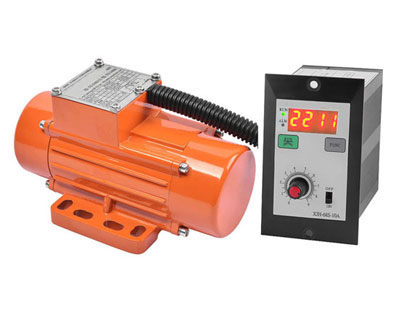Run the vibration motor at 50 Hz
The power frequency determines the speed of the motor. Vibration motors designed to run at 50 Hz must not run at 60 Hz, or when using a frequency converter, at frequencies above 50 Hz. Running the motor at frequencies above 50 Hz will greatly improve bearing life. Premature failure of bearings and motors can occur. Also, the vibrator may be damaged or destroyed. The centrifugal force of the motor running at 60 Hz increased by 44% compared to the motor running at 50 Hz with the same flyweight setting.

Run the vibration motor at 60 Hz
The power frequency determines the speed of the motor. Vibration motors designed for 60 Hz operation must not be run with frequency converters exceeding 60 Hz. Motors operating at frequencies above 60 Hz will result in significantly shorter bearing life. Premature failure of bearings and motors can occur. Also, the vibrator may be damaged or destroyed.
Using a frequency converter to operate a vibrating motor
A suitable frequency converter must be used to operate the vibration motor. During the start-up phase, the full start-up current must be available.
Running the motor with a mains frequency of 50Hz or 60Hz will result in a significantly shorter bearing life. This can lead to premature bearing failure. Also, the vibrator may be damaged or destroyed.
By running the vibration motor at too low a frequency, the motor may deviate from the machine’s eigenfrequency. The motor then fails to reach rated speed and/or gets out of sync. Fundamentally, we recommend never running a motor below 60 % of the mains frequency. However, the lowest frequency at which the machine can run is always determined by the machine’s eigenfrequency, and the motor has no effect on it. Make sure the frequency converter can run correctly calculate the eigenfrequency of the machine, because even 60% may mean the frequency is too low.
The motor should always be started using the full line frequency, i.e. the frequency converter is set to 100 %.
